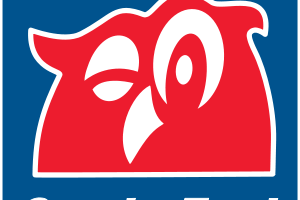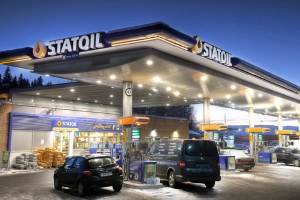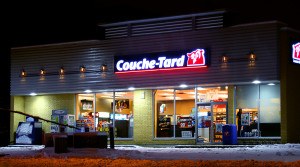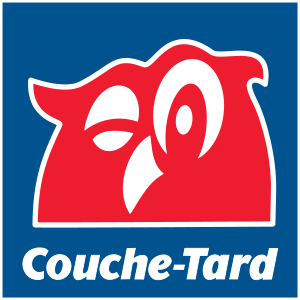Couche-Tard: Conquering Convenience

Alain Bouchard built the world's largest convenience store chain (that nobody has ever heard of), by focusing on industry consolidation and best-in-class operations
From a single convenience store in a suburb of Montreal in 1980 to more than 10,000 convenience stores across North America and Europe, the Couche-Tard story is an extreme example of effectiveness [1]. Led by its founder Alain Bouchard, Couche-Tard (French for sleep-late) has spent decades consolidating the convenience store industry by relentlessly focusing on margins at its stores and using the cash flow generated to grow inorganically. The result of these efforts has been the creation of the largest convenience store chain in the world, with plenty of room to continue growing in the fragmented industry.
Business Model:
Couche-Tard’s business model focuses on consolidation of the convenience store industry, using operational expertise to differentiate its store base and leveraging that advantage to acquire and improve its competitors’ businesses [2]. As CEO Brian Hannasch explains, Couche-Tard is “in the business of selling time” – constantly seeking to improve the customer experience by maximizing the speed of service and convenience [3].
Operating Model:
Ownership model
Couche-Tard owns and operates the vast majority of its stores, taking on the operational risk, as well as the rewards that come from its expertise. Choosing to own the stores (rather than franchise) allows Couche-Tard to execute on its core operational capabilities and ensure a consistent customer experience across the network.
Merchandising focus
The company also places a relentless focus on merchandising, introducing food prepared on site (hot-dogs and other quickly prepared food) and developing private labels to generate higher margins than traditional fuel sales. Since May 2014, the company has introduced over 100 private label goods across its network, generating improved margins and differentiating itself from its competitors [2]. The optimization of the store offerings is complemented by Couche-Tard’s use of its scale to improve supply chain conditions across its network. This skill is particularly helpful with new stores in the network that benefit from supply agreement renegotiations, such as Couche-Tard’s newly acquired chain, The Pantry. [4].
Management structure
Couche-Tard operates through a lean, decentralized management structure. The company centralizes back-office issues such as IT and accounting to generate efficiencies of scale but leaves customer-facing issues such as marketing and pricing to relatively autonomous business units. With these business units separated by geography, Couche-Tard believes it is critical to transfer its personnel across units to share best practices and create executive-level talent that understands all aspects of Couche-Tard’s business [2].
Alignment of Business & Operating Models
Couche-Tard has been a smashing global success (the stock return 50% CAGR over the past 5 years), thanks to an alignment between the business and operating model that makes positively reinforce each other. The business model is built upon the premise of industry consolidation, which requires significant cash flows from the existing asset base to acquire a competitor and to pay down debt in the future. Couche-Tard’s operating model has therefore been heavily geared towards generating as much cash-flow from the business as possible through complete store ownership, heavy focus on high-margin merchandising and minimizing overhead and corporate costs.
The alignment between models allowed Couche-Tard to make major acquisitions, like the purchase of Statoil in 2012, then leverage its operational capabilities to repay the debt required for that acquisition. As the company grows, its economies of scale and operational expertise also develops, allowing it to generate greater cash flow for future acquisitions. By continuing to demonstrate discipline in its acquisition decisions and in its operational focus, Couche-Tard can easily continue this winning strategy and make it increasingly difficult for the competition to surpass the company. With its latest acquisition of Topaz, an Irish chain, Couche-Tard and its winking owl are steadily marching towards a global convenience store empire, an empire built on organizational effectiveness [6].
Sources:
http://www.canadianbusiness.com/lists-and-rankings/best-stocks/2014-investor-500-couche-tard/ [1]
http://corpo.couche-tard.com/wp-content/uploads/2014/06/2015-Annual-Report2.pdf [2]
http://www.canadianbusiness.com/leadership/brian-hannasch-couche-tard-interview/ [3]
http://corpo.couche-tard.com/wp-content/uploads/2014/05/2016-Q1-Press-Release-En.pdf [4]
https://www.google.com/finance?cid=665775 [5]
http://nysepost.com/denis-obrien-to-sell-topaz-to-a-canadian-firm-64548 [7]






You’re right, I’ve never heard of this convenience store before! It’s interesting that Couche-Tard’s strategy is focused both on increasing the volume of the stores and improving it’s merchandising. The supply chain network to support this must be phenomenal – or if not, Couche-Tard may have difficultly expanding. Not only is distributing to over 10,000 stores complex, but so is offering private label and food prepared on-site. Prepared food usually requires both refrigerated and freezer space within distribution centers (not your standard dry DC) and private label not only needs distribution, but manufacturing as well. I would be interested to know how Couche-Tard develops its acquisition strategy. Are newly acquired brands co-located to their existing distribution centers so Couche-Tard can reap economies of scale or are they also acquiring these brands’ existing distribution network? As Wal-mart starts to expand into convenience stores and gas stations through its Wal-mart To Go brand, Couche-Tard may face competition without the proper supply network serving as a solid foundation to the company. I hope to see a Couche-Tard around soon!
Thanks for sharing this crown jewel of capitalism from our neighbors to the north. It is interesting to see how Couche-Tard is able to leverage their ownership of their retail stores into net benefits of the company. During my time at ExxonMobil, I heard my fair-share of horror from colleagues tasked with managing the service station business. Do you have any concern around their ability to fully integrate any of the companies that they acquire? They have had a great track record thus far, which is a testament to their focus, but with a business model so dependent on m&a, one bad egg can ruin their progress.